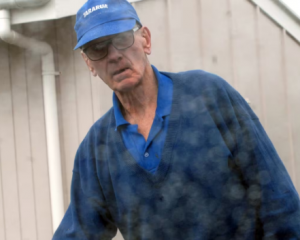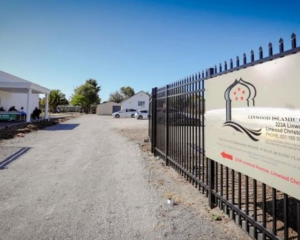
The Environment Court’s interim decision comes after a long-running legal fight triggered by a complaint about a noisy aeroplane.
Fixed-wing aircraft will still be allowed to use the privately owned airstrip but helicopters are grounded, at least until there is a resource consent in place.
There are about 200 helicopter trips to the airstrip each year, most of which happen in summer and are for transporting tourists and visitors to the high-end Awaroa Lodge on private land in the national park.
The airstrip was established in the 1960s on private farmland to support operations.
It is now run by a company made up of property owners in Awaroa, and has become increasingly busy for air transport and tourism.
The legal action was triggered by a complaint in 2018 about noise from aircraft using a new airstrip established on land adjacent to the existing one.
The Tasman District Council looked into use of both, and while it understood that existing use rights applied to the original airstrip, it felt they no longer met current environmental protection standards.
The council sought enforcement orders against a list of respondents, including the company Awaroa Aerodrome Ltd, which operated the airstrip, for which landing and overnight fees were charged.
The majority of respondents were critical of the council’s efforts, and the court’s decision, having argued they had existing use rights.
"The result on helicopters came out of the blue — it was not even part of anyone’s original concerns but we can’t blame the court — we don’t think it could work out what the council was trying to achieve either."
The court said it was not convinced from the evidence provided that helicopters could continue to use the airstrip, without the measures and controls provided by a resource consent. The same could not be said for other aircraft types using the airstrip.
In summary, it said that use of the airstrip was permitted under earlier council rules and regulations, but it lost that status once they were supplanted by updated environmental management tools, including the Tasman Resource Management Plan.
Judge Brian Dwyer and Environment Commissioner David Bunting said in the decision that since the late 1990s or early 2000s, there had been a significant change in use of the airstrip, namely a regular and increasing volume of helicopter traffic.
The head of one commercial helicopter operation, with a long history of aviation tourism in Awaroa, said the decision came out of the blue.
Helicopters Nelson chief executive Pete Darling said a letter from the council a few weeks ago was the first he knew about what was happening.
Mr Darling said it was frustrating to be directly affected by a decision when he was effectively a third party in the matter.
The council said at the heart of the matter was conflict around the rights of existing residents and those wanting to run businesses.
Council environment group manager Dennis Bush-King said the interim decision established a benchmark for existing use rights, but it also provided room for further discussion.
"... what we were saying was that the nature of the use had exceeded the historical use rights.
"The court has now given us an indication as to what it believes is acceptable and therefore the residents need to accept that is the threshold the airfield can work to."
Wellington architect Zac Athfield was the sole director and shareholder of Awaroa Aerodrome Ltd, and a director of the New Zealand Settlement Co Ltd, owner of property adjoining the airstrip.
He said he and other respondents were unsure as to whether the court’s decision was a fair and correct one, and they aimed to seek clarity from the council.
A decision on court costs was reserved.
- Tracy Neal, Open Justice reporter









